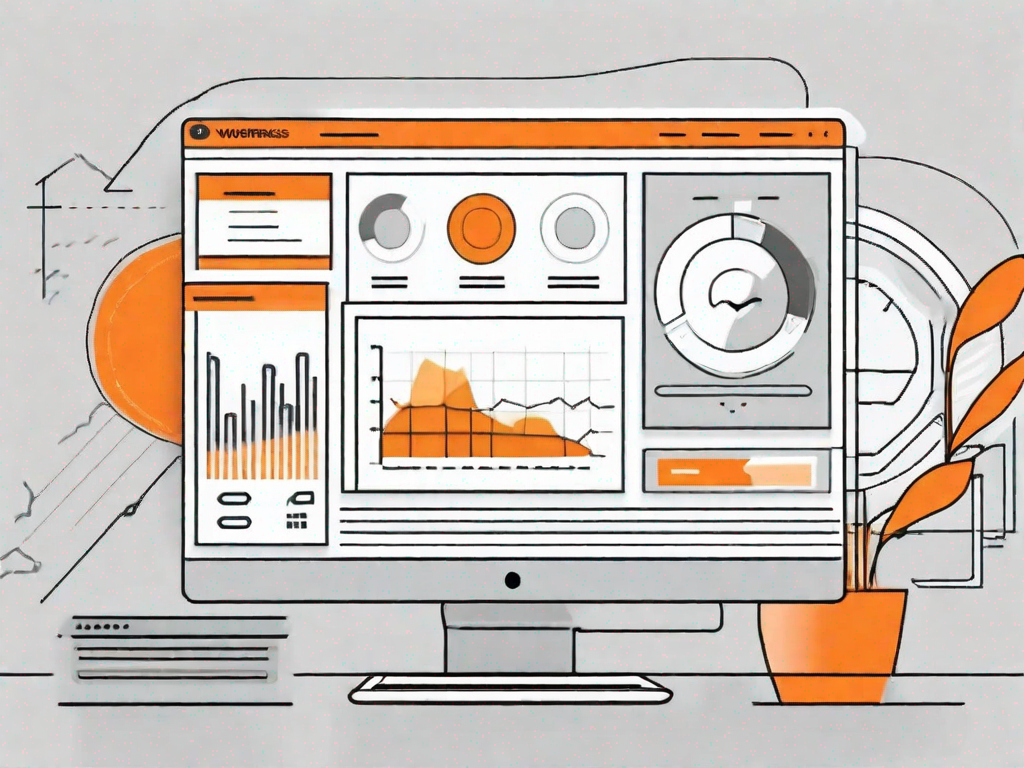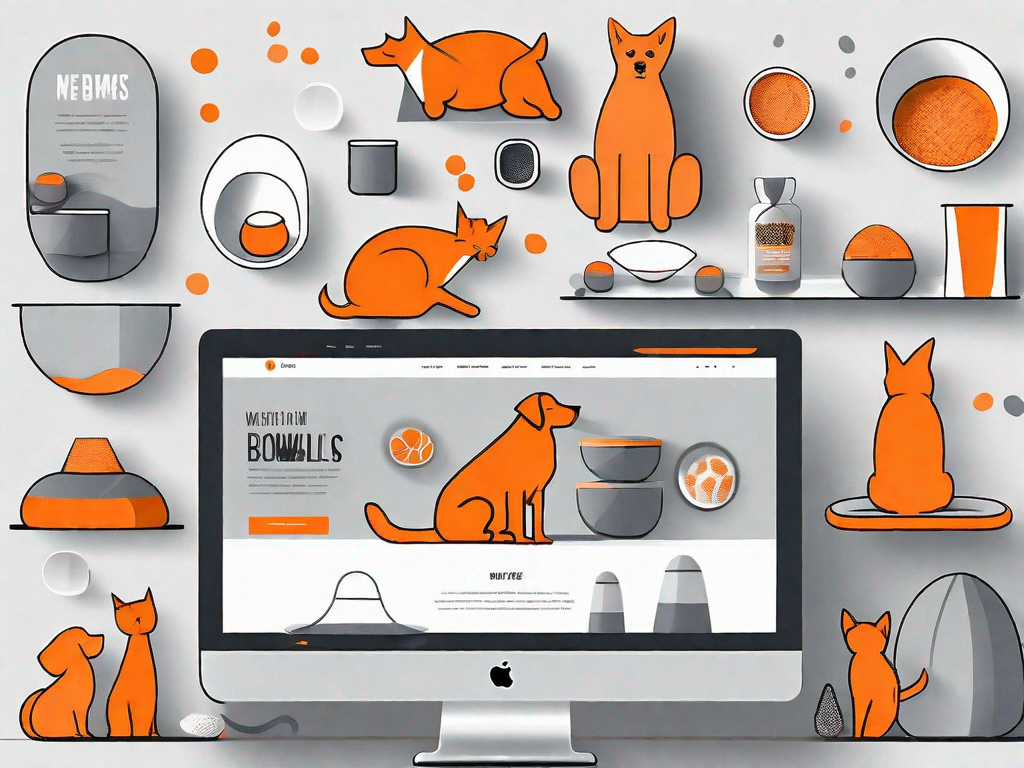.svg)
How to install a WordPress theme
.svg)

If you're new to using WordPress, understanding how to install a theme can seem daunting. Luckily, it's a straightforward process that can be easily accomplished in just a few steps. In this article, we'll guide you through the process of installing a WordPress theme, from understanding the basics of themes to troubleshooting common installation issues.
Understanding WordPress Themes
Before we dive into the installation process, let's take a moment to understand what a WordPress theme is. A theme is a collection of files that determines the design, layout, and functionality of your WordPress website. It controls how your website looks, how it's organized, and how it behaves.
When it comes to creating a visually appealing and functional website, WordPress themes play a vital role. They provide a framework that allows you to customize your website's appearance without having to write complex code from scratch. With a wide range of themes available, you can choose the one that best suits your needs and preferences.
What is a WordPress Theme?
A WordPress theme is essentially a template that determines the appearance and functionality of your website. It consists of various files, including style sheets, template files, and JavaScript files, that work together to create the overall look and feel of your website.
Think of a WordPress theme as the foundation of your website. It provides the structure and layout for your content, allowing you to showcase your ideas, products, or services in a visually appealing and organized manner. Whether you're running a personal blog, an e-commerce store, or a corporate website, choosing the right theme is essential to create a positive user experience.
Importance of Choosing the Right Theme
Choosing the right theme for your WordPress website is crucial as it sets the tone for your entire online presence. A well-designed and optimized theme can enhance the user experience, improve your website's performance, and help you achieve your desired goals.
When selecting a theme, it's important to consider factors such as responsiveness, customizability, and compatibility. A responsive theme ensures that your website looks great and functions well on different devices, including smartphones and tablets. Customizability allows you to personalize your website's appearance and tailor it to your brand or style. Compatibility ensures that your theme works seamlessly with the latest version of WordPress and other essential plugins.
Furthermore, a well-chosen theme can also have a positive impact on your website's search engine optimization (SEO) efforts. Search engines like Google consider factors such as website speed, mobile-friendliness, and user experience when determining search rankings. By choosing a theme that is optimized for performance and user experience, you can improve your website's visibility and attract more organic traffic.
Remember, your website is often the first point of contact for potential customers or readers. A visually appealing and user-friendly design can leave a lasting impression and encourage visitors to explore further. So, take the time to research and choose a theme that aligns with your goals and reflects your brand's personality.
Preparing for Theme Installation
Before you install a WordPress theme, there are a few important steps you should take to ensure a smooth installation process.
When it comes to creating a website, choosing the right theme is crucial. Your theme determines the overall look and feel of your site, and it plays a significant role in the user experience. So, before you dive into the exciting world of WordPress themes, let's explore some essential preparations to make your theme installation journey a breeze.
Backing Up Your Website
Before making any changes to your website, it's always a good idea to back up your site files and database. This way, if anything goes wrong during the installation process, you can easily restore your website to its previous state.
Think of it as a safety net for your precious website. Backing up your files and database ensures that you have a copy of all your hard work, allowing you to revert to a stable version if needed. There are various backup plugins available for WordPress, such as UpdraftPlus and BackupBuddy, which simplify the process and give you peace of mind.
Choosing a Reliable Theme
There are thousands of WordPress themes available, both free and premium. It's important to choose a reliable theme from a reputable source to ensure that it's well-maintained, regularly updated, and compatible with the latest version of WordPress. Take the time to research and read reviews before making your selection.
When it comes to selecting a theme, it's not just about aesthetics. While a visually appealing design is important, you should also consider factors such as functionality, responsiveness, and support. A reliable theme provider will offer regular updates to address any bugs or security vulnerabilities, ensuring that your website remains secure and up to date.
Furthermore, compatibility with the latest version of WordPress is crucial. WordPress constantly evolves, introducing new features and improvements. By choosing a theme that is regularly updated, you can take advantage of these advancements and ensure a seamless integration with the platform.
Reading reviews and user feedback can provide valuable insights into the theme's performance and customer satisfaction. Look for themes that have positive reviews, responsive support teams, and an active user community. This way, you can be confident that you're selecting a theme that has been tried and tested by others.
Remember, your website is a reflection of your brand or personal identity, so take the time to find a theme that aligns with your vision and goals. With the right preparation and a reliable theme, you'll be well on your way to creating a stunning and functional WordPress website.
Ways to Install a WordPress Theme
There are multiple ways to install a WordPress theme, depending on where the theme files are located. Let's explore two common methods: installing a theme from the WordPress repository and uploading a theme from your computer.
Installing a Theme from the WordPress Repository
The WordPress repository is a collection of free themes and plugins that have been vetted and approved by the WordPress team. To install a theme from the repository, simply log in to your WordPress dashboard, navigate to the "Themes" section, search for the desired theme, and click the "Install" button.
Uploading a Theme from Your Computer
If you have a premium theme or a custom theme that is not available in the WordPress repository, you can upload the theme files directly from your computer. Simply go to the "Themes" section in your WordPress dashboard, click the "Add New" button, select the "Upload Theme" option, choose the theme file from your computer, and click the "Install Now" button.
Step-by-Step Guide to Install a WordPress Theme
Now that you understand the basics and have prepared for the installation process, let's walk through the step-by-step guide to install a WordPress theme.
Accessing the Theme Section
Login to your WordPress dashboard and navigate to the "Appearance" section. From there, click on "Themes."
Searching for a Theme
In the "Themes" section, you can browse the available themes or use the search function to find a specific theme. Use keywords or filters to narrow down your selection and find the theme that best suits your needs.
Installing and Activating the Theme
Once you've found the desired theme, click the "Install" button. After the theme is successfully installed, click the "Activate" button to make it the active theme for your website.
Troubleshooting Common Installation Issues
While installing a WordPress theme is usually a smooth process, there may be some common issues that you may encounter. Let's explore two common installation issues and how to resolve them.
Theme Upload Failed
If you encounter a "theme upload failed" error message, it could be due to various reasons such as file size restrictions, incompatible file formats, or server limitations. To resolve this issue, check the theme file size, ensure it's in the correct format, and contact your hosting provider for assistance if needed.
Broken Theme Issues
If you notice that your theme's appearance or functionality is not as expected after installation, it could be due to a broken theme issue. This may occur if the theme files are incomplete or there are conflicts with other plugins or custom code. To resolve this issue, try reinstalling the theme, disable conflicting plugins, or consult the theme developer for support.
By following this step-by-step guide and understanding the basics of WordPress themes, you can confidently install and activate the perfect theme for your website. Remember to back up your site, choose a reliable theme, and troubleshoot any common installation issues that may arise. With the right theme, your WordPress website will look professional, engage your audience, and help you achieve your online goals.
Related Posts
Let's
Let’s discuss how we can bring reinvigorated value and purpose to your brand.







.svg)